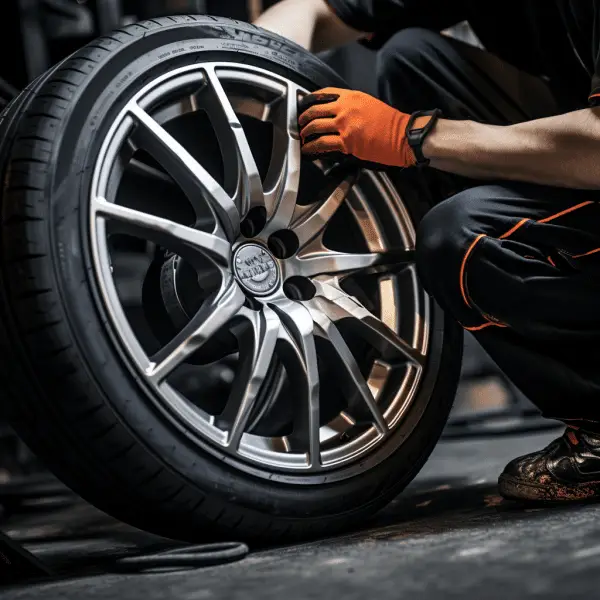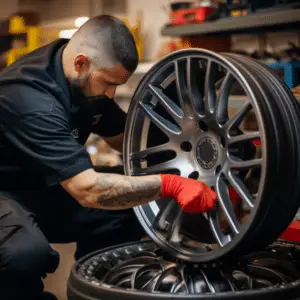
Complete Guide: Repairing Bent Car Rims Effectively
Curbs, potholes, and other road hazards can cause your car’s rims to bend or be damaged. Rims are expensive to replace and easy to damage, so they are critical for car maintenance. Fortunately, bent rims are repairable. Below is a quick guide to repairing bent rims.
How Do You Know That Your Rim is Bent
Are you having trouble identifying or diagnosing a bent tire rim? Here are the top five indicators that your rim is bent.
Causes of Rim Damage

Even before your car shows signs of a bent wheel rim, by recalling your previous driving experience, you can quickly determine if you are at risk. Fender benders and running into the curb are significant causes of bent rims. If this happens, you should inspect your wheels or take them to a mechanic to have them checked out.
Visible Damage
Damage to the rim is normally visible. However, sometimes the damage may be difficult to identify if you have large plastic or metal hubcaps. It should be relatively simple to remove your hubcaps and inspect your tire and rim for damage.
After removing the hubcap, examine all your tires for any areas of visible rim damage or deformation. If there is, it should be repaired and straightened or replaced if substantial damage has occurred.
Vibration and Shakiness When Steering
Shakiness and vibration that travel up the steering column are two of the most evident indicators of a bent rim. When a rim is bent or damaged, it causes your tire to have inconsistent contact with the road surface. This, in turn, causes shakiness and vibration when you are driving. Your front rim is bent if you notice shakiness in the front, such as the steering column. Vibration in your seat or further behind your vehicle, on the other hand, could signal that your rear rim has been damaged or bent.
Your Tire Keeps Deflating
You may notice the tire pressure monitoring device going off regularly after striking a pothole. This is a clear sign that your rim has damaged the tire wall. The PSI loss can be slow at times, requiring you to visit the air pump more than once a month. If your rim damage is severe, you might wake up one morning and find your tire completely flat.
You might wonder why bent rims affect tire pressure. TThis is because a tire with a straight rim is more effective at keeping air from leaking between the tire and the wheel. If a car’s rim is substantially damaged, the tire’s integrity may be jeopardized.If this is the case, you’ll likely need to replace the tire or at least patch the one you have, in addition to fixing the bent rim.
Your Car Not Handling the Way It Used To
A bent rim can cause problems with tire pressure and other issues. This, in turn, can have a considerable impact on your vehicle’s steering and performance. You may have a bent rim if your car feels slushy or if you can’t easily control it. Perform a brief visual inspection or take your vehicle to a mechanic as soon as possible to get it assessed.
How Serious is a Bent Rim?
If you leave a tiny bend in your rim unattended, it can cause significant damage to your vehicle. Changes in road vibrations and driving behaviour can affect your vehicle’s axles, disrupt your driveshaft, cause damage to your healthy tires, and much more. You will almost certainly find that the resultant damages are far more expensive than mending your bent rim. When you notice a problem with the structure of your wheel, it’s critical to get it serviced as soon as possible.
How to Fix a Bent Rim Step by Step
Remove the Rim
Step 1
Underneath your car, on the side with the bent rim, place the jack. To lift the vehicle, raise the jack. As the automobile rises, double-check that the jack will sit beneath the vehicle’s frame. Raise the car until the tire is no longer in contact with the ground. Check to see if the car is stable.
Step 2
Carefully remove all the lug nuts from the wheel. Remove the rim and tire from the vehicle. Your tire may already be flat and easy to detach if your rim is badly deformed. If your tire is not flat due to the bent rim, you might want to consult your local repair shop for advice on whether or not you should proceed with the repair.
To detach your flat tire from the bent rim, use a pry bar. Pull the tire off the rim by moving the pry bar around the seal of the tire. Repeat with the opposite side of the tire seal, detaching the tire completely.
Fix Your Rim

Step 1
Start by wearing protective gloves and goggles. With the blow torch, heat the bent part of your rim. For about two minutes, concentrate the heat on one section of the bend. Depending on the severity of the bent, you may need to heat for an extended time or in more than one area.
Step 2
To return the heated rim to its natural shape, strike it with a mallet. If your mallet is leaving markings on the rim, consider placing a piece of wood against the bend. This will help to deflect the strokes from the mallet. Repeat steps one and two until your rim is in perfect shape.
Step 3
Wait until your rim is completely cool before proceeding. Put the tire back on the rim with the pry bar. Inflate the tire with an air compressor. Ensure that there is no air leak before proceeding to the next step.
Replace the Tire
Step 1
Lift the tire and line the studs for the lug nuts with the holes in the rim. Place the tire on the car by sliding it on.
Step 2
Replace the lug nuts on the wheel studs. Before lowering the jack, double-check that the lug nuts are securely fastened. Remove the jack from the car’s bottom. With the wheel on the ground, tighten all of the lug nuts once more.
